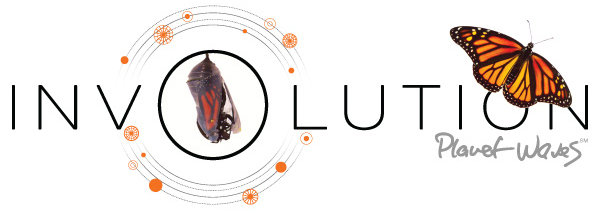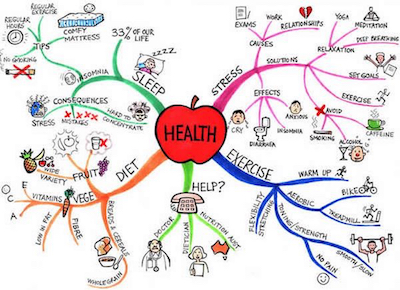Every year, several days before the Cancer solstice, the Gemini Sun opposes the center of our galaxy in Sagittarius. This is no small event. Earth orbits the Sun. Our Sun orbits the Galactic Core. When that set of relations comes into its annual alignment it is a subtle, yet significant, moment of the year.

Science, as well as astrology, is based in part on pattern recognition. When Galileo sighted Jupiter orbited by its moons, he deduced that planets in our solar system cycled around the Sun in much the same way. With the perspective of time, Galileo was proven to be essentially correct.
The first model for a divisible atom was, in turn, based on the example set by the solar system. As it turns out, atomic structure is not so simple. Even so, the initial assumption of a Sun-like nucleus orbited by planet-like electrons was close enough to be workable in the early stages of both modern chemistry and subatomic physics.
When it comes to astrology, we are still in the early stages of working with the Galactic Core. Nobody (neither astronomers nor astrologers) figured out what a galaxy was (or that we were part of one) until less than three centuries ago. Subsequent discoveries of uncounted other galaxies in an unmeasured universe are even more recent.
All that being said, astrologers do have a proven model to interpret the Gemini Sun’s opposition to the center of our galaxy this weekend. It is the Full Moon.
The most commonly used definition of an opposition for both astronomers and astrologers is the Earth moving between two other objects or points. That’s what happens during a Full Moon.
On a zodiac chart, a Full Moon is portrayed by the Sun and Moon being in the same degree of opposite signs. With your own eyes, you see the same phenomenon as the Moon rising in the East just as the Sun is setting in the West. It is the halfway point of the (roughly) monthly lunar cycle of phases, symbolizing the end of waxing and the beginning of waning. Any child knows what it looks like. Everybody knows how it feels.
From the very beginning, astrologers have employed pattern recognition in much the same way Galileo did. Whenever two objects are opposed on a zodiac chart, the template for interpreting that aspect is the Full Moon.
Hence, you might say that we will have a Full Galactic Core (GC) this weekend. Just as with a Full Moon, Earth will be moving between the two. At the same time the Sun and GC will be opposing across the zodiac and across the sky. Yet, there will be one major difference from the Full Moon prototype.
The Sun and Moon are not alike — they are complements. The Sun emanates light. The Moon does not. Instead, the Moon reflects. When you see a Full Moon, it is only because it is illuminated by the Sun.
The Sun and GC, on the other hand, are essentially two different versions of the same thing. Both are centers of gravity around which other things orbit. Both are sources (not reflectors) of profound energy. The major differences are size and familiarity.
Human beings are so familiar with the Sun, it is a factor in our DNA. When exposed to sunlight, your body changes in a predictable, programmed manner. There is so far no evidence of a similar physical familiarity with the GC. The relationship between you and the center of our galaxy is a visual and conceptual one.
Nearly as familiar as the Full Moon is the tableau of what many call the “Milky Way” — the side-on view of our galaxy (which, depending on your location and time of year, includes the area of the sky where the GC is located). Realizing that every point of light in that vast swath of stars is basically a Sun (and that every star visible to your unaided eye is part of our galaxy) puts things into perspective.
Yet, the perspective of our galaxy as a much bigger version of our solar system is much more recent — and that’s a reasonable interpretation of the Sun opposing the GC this weekend.
On the one side of Earth (and in Gemini) will be the Sun — something we have always known. Something that is demonstrably part of you. Something you instinctively (and correctly) know you cannot live without. On the other side (in Sagittarius) is a phenomenon that has been there much longer than the Sun, but which has only recently been perceived for what it most fundamentally is by our kind.
Like Galileo, we can deduce that the GC is very much like the Sun, but on a scale beyond what your experience (or indeed, the entire experience of life on Earth) equips you to understand. In that interpretation we could also be fundamentally correct.
On the other hand, our relationship with the GC could (at this stage of life on Earth) be very much like early ideas of a divisible atom. What we postulate of the GC could be only a beginning: enough to be workable for now, but only a prelude to something much more sophisticated and involved that will usher in an unanticipated level of awareness, ultimately leading to changes we cannot possibly anticipate at this time.
This year’s passage between the Sun and Galactic Core is thus significant largely because of you. For your not-too-distant ancestors, it was an event nobody was fully conscious of. With recent generations leading up to yours, awareness gradually grew. Now, the Sun opposing the center of our galaxy is something you can keep track of and follow, much as with Full Moons. The question is, what are you (and we) going to do with that information? The answer, at least in part, is yours to provide.
Offered In Service











